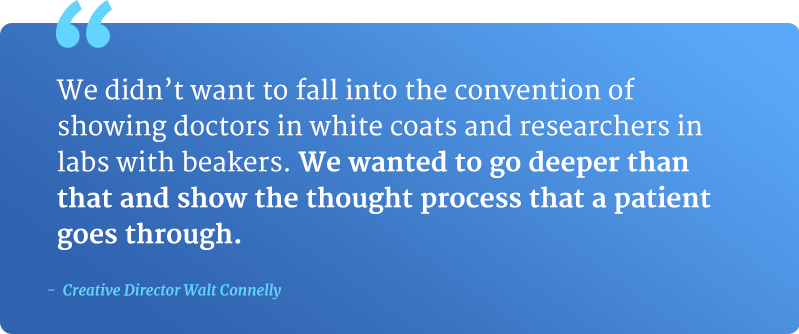
Building A Brand: Winning Advice From The Best Business Leaders

Building a brand is as fundamental as building a business.
While it may be possible to have a highly profitable company without a clearly identifiable brand, just try to think of one.
I’ll wait…
Brand-building isn’t just about recognition; it’s about revenue. The most relevant brands of the past decade outperformed the S&P 500 by almost 30% on average, according to the Prophet Brand Relevance Index.
What separates the most memorable brands from the more forgettable ones? And how can you implement those elements into your brand strategy?
What Do The Best Brands Have In Common?
The Prophet Brand Relevance Index surveys thousands of consumers each year to determine which brands are most relevant and publishes the results in an annual report.
The index bases its definition of relevance on four key principles:
- Customer obsessed: Brands we can’t imagine living without
- Ruthlessly pragmatic: Brands we depend on
- Distinctively inspired: Brands that inspire us to live out our values and beliefs
- Pervasively innovative: Brands that continually introduce new solutions to meet our needs
The authors of this year’s Brand Relevance Index report wrote: The Prophet survey also looked at 25 distinct categories and identified brands that best exemplified them. Those categories included comfort, connection, joy, truth and purpose.
The Prophet survey also looked at 25 distinct categories and identified brands that best exemplified them. Those categories included comfort, connection, joy, truth and purpose.
This year’s top 10 most relevant brands were:
- Apple
- Peloton
- KitchenAid
- Mayo Clinic
- LEGO
- Costco
- Honda
- Johns Hopkins
- PlayStation
- Amazon
These brands are more than just ubiquitous in our households; they connect with us on an emotional level.
Peloton inspires us to keep moving and work toward our fitness goals. LEGO and PlayStation remind us to make time for fun. And amid the uncertainty of the pandemic, Mayo Clinic and Johns Hopkins reassured us with answers to some of our most pressing health questions. Costco kept us stocked up on supplies, and Amazon reminded us we could count on them to have anything delivered right to our doorsteps.
What Do Top Leaders Say About Building A Brand?
Building a brand your customers obsess over means obsessing over your customers. It starts with a keen understanding of who they are, what they need, what they care about and why. It starts with a story that positions them as the hero who wants something and clearly explains how you’ll help them overcome what’s keeping them from achieving it.
That story can’t just be about finding the right software so you can save a few hours each week. It needs higher stakes. As Donald Miller, the author of Building a StoryBrand: Clarify Your Message So Customers Will Listen, puts it:
''All great stories are about survival—either physical, emotional, relational, or spiritual. A story about anything else won’t work to captivate an audience. Nobody’s interested. This means that if we position our products and services as anything but an aid in helping people survive, thrive, be accepted, find love, achieve an aspirational identity, or bond with a tribe that will defend them physically and socially, good luck selling anything to anybody.”
And the work is never finished.
The world’s best brands continually listen to what their customers are saying, sharing and doing. They use what they learn to shape the conversation.
Here’s what leaders of some of the most relevant brands had to say about building and maintaining a strong brand.
Clarify your message
When Netflix first started video streaming, its customers didn’t immediately understand what they were doing and why they wanted it. Gibson Biddle, VP of product marketing at Netflix, knew they needed to explain it to people in the simplest terms. They needed to choose just a few words that best described the brand’s primary value and promise.
They landed on “movie enjoyment made easy.”
While the services have evolved and the company has become a household name, that promise still holds true. But the value it brings to customers is about more than streaming.
Biddle said in a First Round Review article:
“The difference between good and great brands is that they define emotional benefits and ‘something bigger’ that they deliver. The ‘something bigger’ speaks to what you aim to deliver to your customers, but also to the world in 10 years. Like a company’s mission or vision, this brand promise or ‘something bigger’ should be inspirational and help define ‘true north’ for the brand and the product you’re building.”
Biddle uses the branding pyramid to show how Netflix defined exactly what that is. The product is streaming. The top three product benefits are convenience, selection and value. That leaves customers satisfied and delighted. And it gives them something bigger by helping them escape from reality.
Sell innovation
Like Netflix, Slack was selling something before customers knew they needed it. The company had anticipated the need for better communication and collaboration at work.
But CEO Stewart Butterfield knew positioning the software as a better group chat wouldn’t be enough to change people’s minds. He needed to translate the value into terms potential customers would understand and show them how it would change the way they worked.
Butterfield wrote in an article just before the software’s official launch:
“The best — maybe the only? — real, direct measure of ‘innovation’ is change in human behaviour. Innovation is the sum of change across the whole system, not a thing which causes a change in how people behave...By that measure, Slack is a real and large innovation...For organizations that adopt it, there will be a dramatic shift in how time is spent, how communication happens, and how the team’s archives are utilized. There will be changes in how team members relate to one another and, hopefully, significant changes in productivity...That’s why what we’re selling is organizational transformation.”
Stick to your brand’s core values
From the time it launched one of its earliest commercials, featuring world-class athletes and the Beatles’ song, Revolution, Nike has always been a brand that stands for something.
When Nike featured Colin Kaepernick in its ads, they were taking a clear stance amid racial tensions and political division.
The ad said, “Believe in something, even if it means sacrificing everything.”
It spoke to their core values and affirmed their support for athletes who protested racial injustice by kneeling during the National Anthem.
Nike saw a 31% increase in online sales after that ad, according to the Masters of Scale Podcast.
Nike co-founder Phil Knight said in the episode:
Tell your brand story
The COVID-19 pandemic put GE Healthcare into the spotlight. At the time, there was almost daily media coverage about the shortage of medical supplies and personal protective equipment. The GE Healthcare team wanted to change the narrative.
GE Healthcare VP Kristin Fallon said in a recent Forrester article: They recruited a multimedia journalist to produce a series of videos from the front lines of the pandemic. The first season of 42 videos told the story of how GE was producing ventilators, coordinating with the global supply chain, and using data and artificial intelligence to improve its processes.
They recruited a multimedia journalist to produce a series of videos from the front lines of the pandemic. The first season of 42 videos told the story of how GE was producing ventilators, coordinating with the global supply chain, and using data and artificial intelligence to improve its processes.
During the campaign, GE Healthcare attracted more than 770,000 views and more than 31,000 new social media followers, according to Forrester. GE Healthcare employees also received messages of support and felt a stronger sense of pride while working through the challenges.
Trigger emotion
One of this year’s most relevant brands, the Mayo Clinic, was also on the receiving end of the public’s anxiety surrounding the pandemic. It wanted to reassure people that in the midst of uncertainty, its doctors and healthcare professionals provided answers. They could give patients a diagnosis and give them peace of mind.
The Mayo Clinic launched a video campaign featuring Viola Davis as the narrator. The 30-second commercial shows what happens to the brain when it’s faced with uncertainty and how it looks when it finds answers.
Creative Director Walt Connelly told Muse in a recent article:
What Are The Essential Elements For Building A Brand?
Building a brand the world knows and loves starts with a great story that puts your customers’ problems at the center of the plot and evokes strong emotion. It requires research, active listening and thoughtful planning. Sometimes when you’re too close to your company, it can be difficult to see your products and services from your customers’ point of view. That’s when it can be helpful to have a third-party perspective.
A marketing agency with expertise in branding can help you cut through the noise and excess information to get to the most crucial elements of your story.
They can also help you develop the creative assets you’ll need to promote your brand, including logos, brand guidelines, a user-friendly website and a clear, compelling message that helps your customers immediately understand your value.
This is where Kuno Creative really shines. In over 20 years, we’ve helped many successful companies develop lovable brands, including Just Add Ice Orchids, iOFFICE, and numerous healthcare and manufacturing providers.
We’ll work closely with your team to help you build a brand that gets noticed and drives revenue. We’ll also amplify your brand with in-house experts who provide a full range of services in design, SEO, content marketing and paid advertising.
If you’re ready to build a brand your customers can’t imagine being without, request a consultation with us today.




